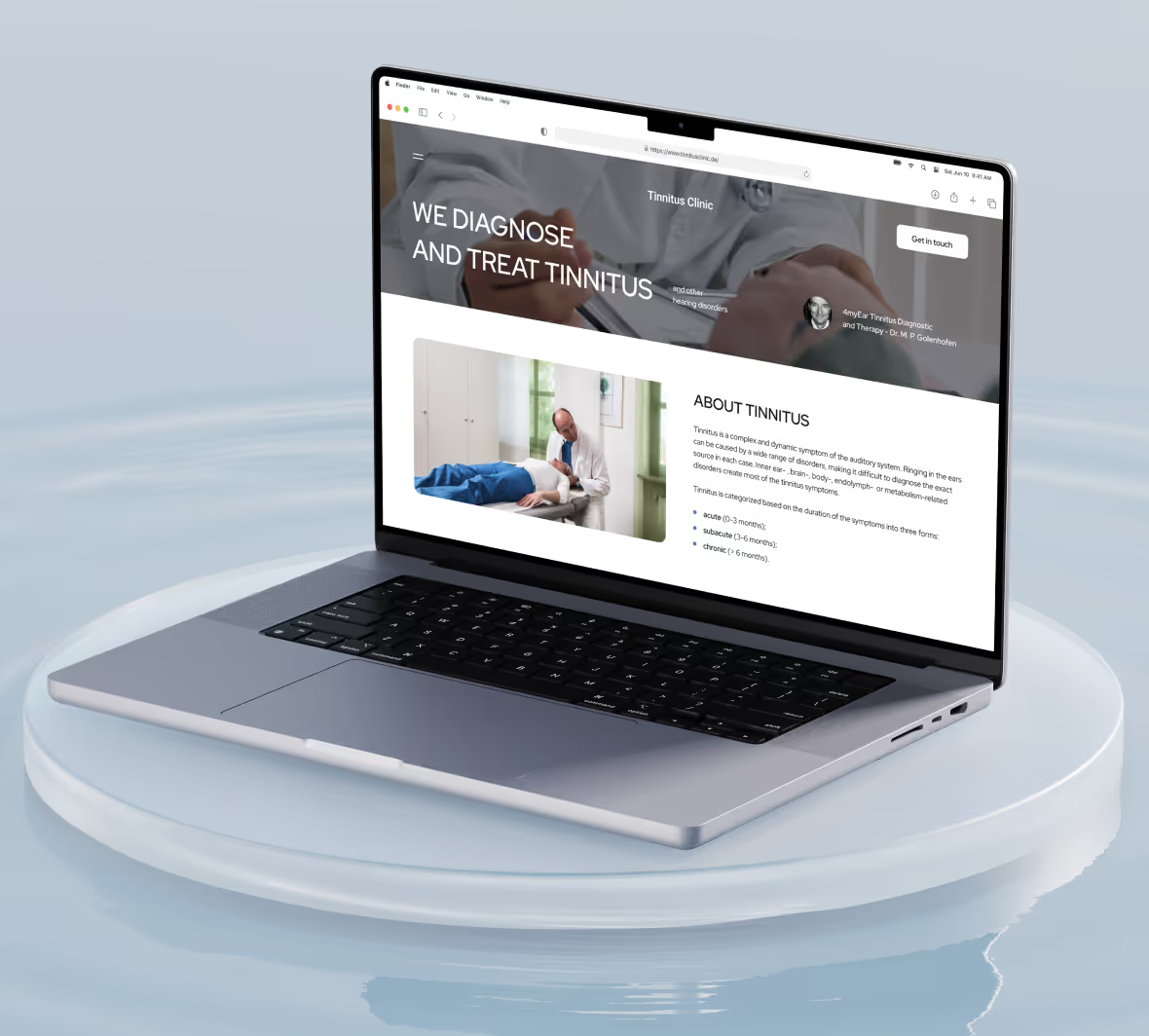
Are you testing ideas for a product? You might find yourself in a common scenario. For instance, you might have an excellent idea for an app or a software solution that can help a specific group of people. However, before you build this product, you want to test it to ensure it meets users’ needs.
A prototype (or proof of concept) can help you do just that. In software, a POC can help you determine whether the app or software can solve a particular problem. This guide will explore POC meaning in software, how to create a POC, and how a no-code MVP can help you build a prototype quickly and efficiently.
No code MVP, a no-code development agency, can help you build a compelling proof of concept to meet your needs. Our solutions can help you achieve your goals, whether to create a software prototype or something else entirely.
What Is POC in the Context of Software Development?
A proof of concept, or POC, is an initial step in the software development lifecycle used to validate the feasibility and potential of a new idea, feature, or project before it goes into full-scale development. In software, a POC serves as a way to demonstrate that a concept or technology can be practically implemented and will work as intended within the project's scope.
A POC differs from a prototype or minimum viable product (MVP). Its purpose is not to provide a usable product or feature but rather to answer a specific question or solve a targeted problem. For instance, a development team may create a POC to verify that a particular integration will work with their existing technology stack or to ensure that a specific performance requirement can be met under real-world conditions.
Why POC Are Important In Software Development
Reduce Risk Early On With a POC
By validating ideas early on, a POC can save time and resources by identifying technical limitations, allowing teams to pivot or refine ideas as needed.
Help Get Stakeholder Buy-In
POCs can be crucial for gaining the approval of stakeholders or clients. Demonstrating that an idea works gives confidence in moving forward.
Save Costs By Identifying Problems Early
By identifying potential roadblocks or limitations early, teams can avoid costly rework or delays during later development stages.
Innovate With POCs
A POC serves as a sandbox for exploring new technologies, frameworks, or integrations, helping teams to determine if they align with the project’s needs.
Related Reading
• Collect Customer Feedback
• MVP Features
• Develop MVP
• MVP Development Cost
• How to Build an MVP
• How to Determine Market Demand
• How to Launch a Startup
• How to Validate Your Business Idea
• MVP Benefits
• MVP Development for Startups
When to Use a POC in Software Development
Using a Proof of Concept (POC) is beneficial in various scenarios, especially when introducing novel features, technologies, or approaches. Determining when to initiate a POC depends on several factors, and understanding these can help in utilizing POCs effectively to drive innovation and minimize project risks.
Introducing New Technology or Integrations
When incorporating a new technology or integrating with an unfamiliar system, a POC helps confirm compatibility with your existing setup. For instance, if a team is considering a switch to a new database or implementing a complex API integration, conducting a POC ensures the technology meets requirements and identifies potential obstacles early.
Testing Scalability or Performance Needs
Some projects demand high performance or scalability, especially in industries like finance, e-commerce, or healthcare, where data loads can be intensive. A POC can verify if the software can handle anticipated demand without compromising speed or functionality. By assessing performance, teams can better plan for scaling while avoiding bottlenecks.
Evaluating Innovative Ideas or Features
If the project requires a unique or experimental feature, a POC tests the viability of that idea in a controlled setting. This is especially useful when implementing concepts that have yet to be widely adopted in the industry, as it allows teams to gauge potential success without committing extensive resources.
Reducing Uncertainty in High-Risk Projects
A POC clarifies projects where the path forward is unclear or presents high risks. It is a low-investment way to explore uncertain areas, giving the development team insight into potential challenges and helping them refine requirements or strategies based on findings.
Gaining Stakeholder Confidence
Projects with significant investment often require stakeholder approval at various stages. A well-executed POC offers a compelling demonstration of feasibility, which can increase stakeholder confidence and build support for project funding. Showing tangible proof that a solution works helps to justify further development and aligns all parties on the project’s potential.
By understanding these scenarios, development teams can better determine when a POC is necessary and ensure that it provides valuable insights to guide the project forward.
Get a Free Product Discovery & Scoping for Your App Idea Today
We are a no-code development agency tailored for non-technical entrepreneurs looking to launch B2B SaaS or service web apps quickly. Our expertise lies in using tools like Bubble.io, Xano.com, and Webflow to deliver MVPs within a month. We offer rapid development speed, cost-effectiveness compared to traditional methods, scalable and secure solutions, and full-service support from design to post-launch. We're ideal for founders who've experienced lengthy traditional development cycles or need a technical co-founder.
Our approach solves common pain points like needing more tech skills, no-code scalability, security concerns, and the desire to focus on business while we handle the tech. With Minimum Code, you can finally bring your long-held business idea to life quickly and efficiently without breaking the bank. Bring your long-held business ideas to life with us, and get a free product discovery and scoping for your app idea today!
Steps to Creating a Successful POC in Software Development
Define Clear Objectives
Start by establishing the POC's specific goals. What are you trying to prove or validate? Outline measurable criteria to determine success or failure, such as performance benchmarks, compatibility with existing systems, or functionality requirements. Clear objectives keep the team focused and allow stakeholders to understand the POC's purpose easily.
Identify Key Features to Test
Instead of attempting to build a full-fledged software version, select only the critical features that need validation. For instance, prioritize the most performance-sensitive parts if testing a new data-processing engine. This keeps the POC manageable, reduces costs, and ensures that development efforts focus on the areas that matter most.
Develop a Minimal Viable Solution
Build a minimal solution that’s just enough to test the core objectives. This solution often called a minimum viable product (MVP), is not meant for public release but is sufficient to showcase feasibility and functionality. Avoid overbuilding by sticking to essential components, ensuring the process remains efficient and low-cost.
Simulate Real-World Conditions
For a POC to be effective, it must mimic the actual conditions under which the software will operate. Simulate the environment as closely as possible, including data volumes, user interactions, or network constraints. This can reveal potential challenges that may need to be apparent in a more controlled, less realistic setting.
Collect and Analyze Data
Gather performance, usability, and other relevant metrics data throughout the POC process. Tracking key indicators helps determine whether the solution meets defined success criteria. This step is essential for evaluating feasibility and providing stakeholders with concrete data to support decision-making.
Review and Present Findings
After testing, summarize the POC outcomes and insights in a way understandable to both technical and non-technical stakeholders. This can include a presentation of success metrics, lessons learned, and recommended next steps. A well-documented review builds confidence among stakeholders and clarifies any adjustments needed for future development.
Benefits of Using POC Software in Development
Cut Your Losses with POC Software
POC software offers significant benefits that help organizations make informed decisions before committing extensive resources to full-scale development. Below are some of the primary advantages.
Reduces Risk of Investment
One of the most valuable benefits of POC software is its ability to validate ideas before committing significant financial and time resources. By focusing on the essential features and feasibility, businesses can avoid the risk of investing in solutions that may not work or meet expectations, thereby safeguarding resources and avoiding costly setbacks.
Provides Clearer Direction for Development
A POC offers insights that guide the development team in aligning their approach with practical requirements. Developers can identify necessary adjustments, feature refinements, and technical limitations by testing core functionalities early. This guidance reduces trial and error later in the project, helping to streamline the entire development process.
Facilitates Stakeholder Buy-In and Confidence
Since POCs are often created to showcase an idea’s potential, they are powerful tools for gaining stakeholder support. Visualizing and experiencing a basic product version helps stakeholders, investors, and clients understand the project’s value and functionality. This tangible proof of viability can boost confidence and secure buy-in for the complete project.
Accelerates Time-to-Market
POC software can significantly reduce the final product's market time by identifying potential issues and refining core functionalities early in the development cycle. Developers have a clearer understanding of what works, allowing them to proceed with full-scale development with fewer interruptions and adjustments.
Enhances User-Centered Design
The POC stage often includes initial user testing and feedback, which helps shape a more user-friendly product. Users’ insights at this stage allow developers to adjust to enhance usability and customer satisfaction, which is crucial for creating a product that meets real-world needs and preferences.
Supports Innovation and Creative Exploration
POC software fosters a culture of innovation by allowing teams to experiment with new ideas without the fear of failure associated with full-scale launches. This iterative exploration can inspire creative solutions to complex challenges, enabling the team to push boundaries and develop unique features that add value.
These benefits make POC software an essential part of a development strategy, especially for complex or groundbreaking projects where feasibility and functionality must be confirmed before proceeding.
With Minimum Code, you can finally bring your long-held business idea to life quickly and efficiently without breaking the bank. Bring your long-held business ideas to life with us. Get a free product discovery and scoping for your app idea today!
Related Reading
• MVP Testing Methods
• MVP in Scrum
• MVP App Development
• Types of MVPs
• Lean Startup Validated Learning
• MVP in Agile
• Minimum Viable Product vs Prototype
• Minimum Viable Product Examples
Best Practices for Implementing POC Software in Development
Focus on Core Features: Avoid Distractions by Zeroing in on the Essentials
A POC isn’t about creating a fully functional product. Instead, the goal is to test the viability of an idea. To do this effectively, you must zero in on the core features demonstrating the concept’s functionality. Keep the scope narrow and avoid adding extra features that might overcomplicate the POC. This will allow you to evaluate the main functionality without distractions.
Set Clear Objectives and Success Criteria: Define What Success Looks Like Before You Start
Before developing the POC, set clear objectives. What are you trying to achieve with the POC? Whether it’s testing technical feasibility, user engagement, or market interest, defining success criteria beforehand helps measure the POC’s effectiveness. It also ensures that the evaluation of the results is objective and aligned with your goals.
Involve Key Stakeholders Early: Get Feedback from the Right People
Incorporating feedback from key stakeholders early in the process helps ensure the POC aligns with business goals and expectations. Regularly check in with stakeholders—product managers, investors, or customers—to ensure the POC addresses their concerns and needs. This feedback loop will help refine the POC and guide its development towards success.
Keep the POC Simple and Scalable: Don’t Overcomplicate the Prototype
A POC should be a simple prototype that proves a concept works. Avoid building an overly complicated solution. Simplicity will allow you to focus on testing core functionality and limit the risk of errors or misdirection. At the same time, think ahead about scalability—design the POC with a clear pathway to scale it into a complete product if successful.
Choose the Right Technology Stack: Use Familiar Tools That Allow for Quick Iteration
While it might be tempting to try out cutting-edge technologies, choosing the right tech stack for the POC is crucial for achieving meaningful results. Use familiar and reliable technologies appropriate for the project’s needs, and ensure the chosen stack allows for quick iterations and adjustments. The technology should not hinder the development of the testing of core functionalities.
Collect User Feedback Early and Often: Get Real-World Input to Improve the POC
One of the best ways to improve the POC is by involving real users early in the testing phase. Gather feedback from potential users to understand their reactions and pain points. Make sure to collect qualitative and quantitative data that can guide future iterations. Use surveys, interviews, or usability testing to get direct feedback from your audience.
Monitor and Adjust Based on Feedback: Stay Flexible and Open to Change
POC development should be iterative, just like the product you’re trying to create. Be prepared to make adjustments based on feedback and test results. Adapt the POC’s features and approach to improve performance, usability, and feasibility. Don’t hesitate to revisit the drawing board if a concept isn’t working as expected.
Document the Process: Write Everything Down for Future Reference
Document all decisions, iterations, and feedback throughout the development of the POC. This documentation will be invaluable when transitioning to full product development. It will help developers and stakeholders understand why certain decisions were made and how the POC evolved. Additionally, it serves as a reference point for avoiding future mistakes or missed opportunities.
Test with Real-World Scenarios: Simulate Actual Conditions for the Best Results
Rather than testing the POC in an artificial or controlled environment, try to simulate real-world conditions. This could mean testing with actual users in their natural setting or using accurate data to gauge how the POC will perform when deployed. Real-world scenarios reveal practical issues that might not be apparent in more controlled environments.
Be Prepared to Pivot: Know When to Change Direction
Not every POC will succeed or confirm that the concept is viable. Be prepared to pivot if the results show that the initial idea doesn’t work as intended. A successful pivot requires analyzing feedback and being open to changing the direction of development based on what you’ve learned from the POC.
Get a Free Product Discovery & Scoping for Your App Idea Today
Minimum Code is a no-code development agency tailored for non-technical entrepreneurs looking to launch B2B SaaS or service web apps quickly. Our expertise lies in using tools like Bubble.io, Xano.com, and Webflow to deliver MVPs within a month. Why you should work with us: Rapid development speed, cost-effectiveness compared to traditional methods, scalable and secure solutions, and full-service support from design to post-launch.
We're ideal for founders who've experienced lengthy traditional development cycles or need a technical co-founder. Our approach solves common pain points like missing tech skills, no-code scalability, security concerns, and the desire to focus on business while we handle the tech. With Minimum Code, you can finally bring your long-held business idea to life quickly and efficiently without breaking the bank. Bring your long-held business ideas to life with us, and get a free product discovery and scoping for your app idea today!
Related Reading
• No Code Agencies
• Creating an MVP
• MVP Development Team
• MVP Validation
• Launching an MVP
• MVP Tools
• Lean Startup MVP

Ready to build your product?







